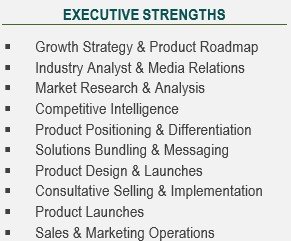Is your executive resume dated? When was the last time you updated your resume?
If you are like many leaders, you’ve been too busy steering your career progression to worry about your executive resume. Now you need a branded resume update; you have surfed the web and realized how old your executive resume looks. Ouch.
Don’t worry. Here are seven steps you can take to revive your executive resume and circulate it to hiring authorities and recruiters with confidence.
How To Update Your Executive Resume
#1. Be Social
Set up your LinkedIn profile and add a LinkedIn icon in the contact section of your resume. It should look something like this:
You can insert the LinkedIn icon and link it to your online profile, or you can write out the URL next to the LinkedIn icon. If you choose the latter, be sure to customize your LinkedIn URL to something more reader-friendly than the long-winded (and ugly) default.
#2. Brand Yourself. I Know You Can!
Before you start writing up your Executive Summary section, add a one or two-sentence tagline with a value offer. This value offer must be in alignment with the job you seek and offer your expertise and ROI for your future employer. See above pic for example.
#3. Focus On Your Target
I often review executive resumes that come across too vague because the job seeker is trying to ‘keep things open.’ While you might be exploring different positions, your executive resume should be focused on one job title as often as possible. See below:
CEO — Chief Executive Officer For Privately-Held Corporations
CFO — Chief Financial Officer Within The Product Commercialization Space
CISO– Chief Information Security Officer With Specialization In The Government Contracting Field
See? Specific.
#4. Be Brief
Another old strategy you may be utilizing is long-form writing. You are probably carrying on in the Executive Summary about your years of experience + your broad executive competencies + your exposure in different sectors, etc.
Don’t do that. Instead, decide what the overarching message that must be showcased in the summery is.
What is that ‘umbrella’ or ‘top of the pyramid’ message you need to state to set the stage?
Remember that the rest of your executive resume will expand upon the Executive Summary.
#5. Differentiate Yourself
Many executives write a summary that sounds more like a job description.
For example:
Chief executive officer with 30 years of experience in M&A, culture change, and global market expansion with P&L accountability. Strong and articulate communicator with vast knowledge of the commercial product sector.
What’s wrong with the above? Nothing except that you are merely stating what the job role entails. Job descriptions are not what your new employer or recruiters are looking for in an executive resume. What they are seeking is to discover the best candidate for the opportunity they have open.
How about the next spin instead of a job description?
Transformational CEO who has powered the success of XYZ company within the commercial product sector, capturing the #1 market position in the global market.
You can get into M&As, P&L and all other high-level executive skill sets within the rest of your resume.
#6. Charts and Graphics
I bet you’ve heard about ATS (applicant tracking systems) and you are wondering if inserting a graphic is the right strategy. Will you make it past the computer screening and sorting software?
There are two points you must consider: 1. at the executive level, ATS is less of a concern since your job search will be mostly dependent on networking, recruiters, and direct email to the company’s hiring authority; 2. applicant tracking systems have become pretty sophisticated.
So why would you want to use graphics and charts anyway? I pose the following question: Why does your company use visual aids in presentations?
Aha!
To simplify concepts, engage the reader, and make a sophisticated and professional impression.
Allow me to share an example:
The table above showcases the fantastic growth this company reaped owing to my client’s leadership impact.
Could we have written this information out? Sure. However, taking in these numbers clear of content provides a more high-impact presentation, it is easier on the eyes and offers side by side comparison of YOY growth.
7. Buzzwords 3.0
Before it was enough to create a column with executive skill sets, which are buzzwords/keywords relevant to the title and industry. See below:
However, the new and more effective twist on the Executive Strengths section is to list your competencies and then align them with examples of how you have leveraged them to drive results.
You can create a few bullet points and list them either next to the inventory of skills or beneath. See this executive resume example.
#8. Get To The Point
Keep the rest of your resume concise. While there is no rule banning a 3-page + resume, you should really only develop the content you must. The goal is to influence and mobilize the reader to make contact.
Of course, the most important thing is to adopt the resume writing strategy that will best showcase your differentiation, help you bridge any gaps, and sidestep weaknesses.
Good luck!
Rosa Elizabeth Vargas
Executive Resume Writer
If you have any questions, comment below. Thank you for stopping by.



